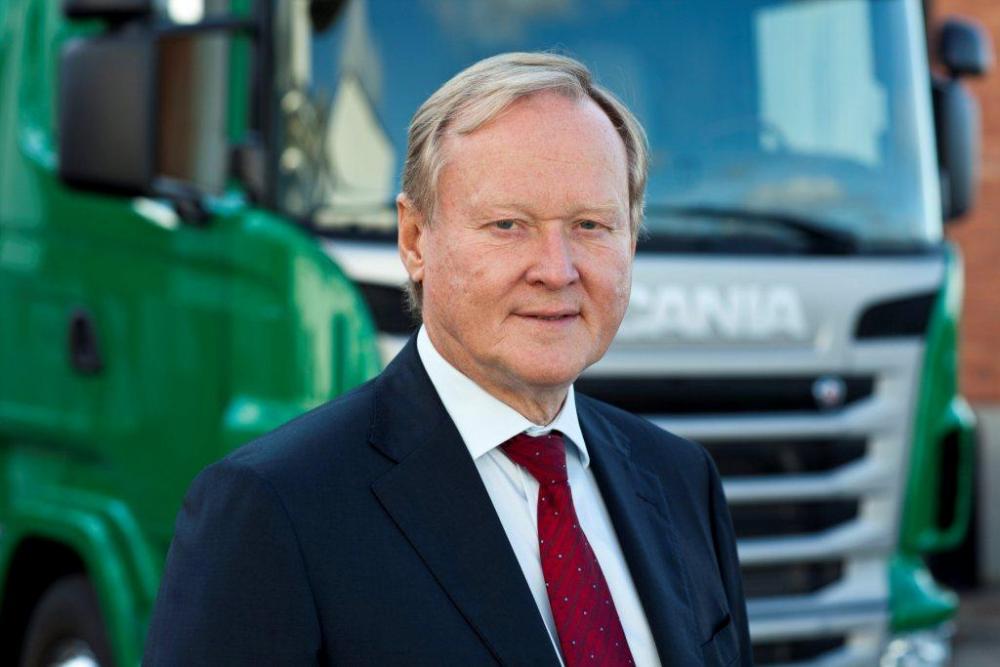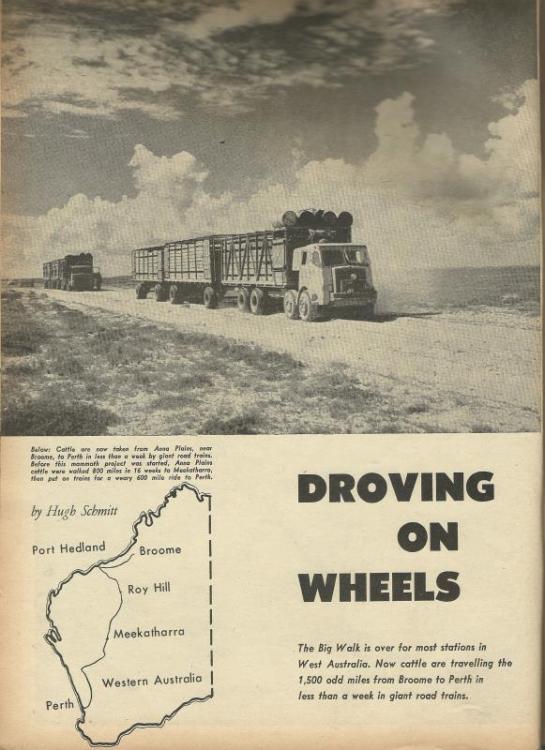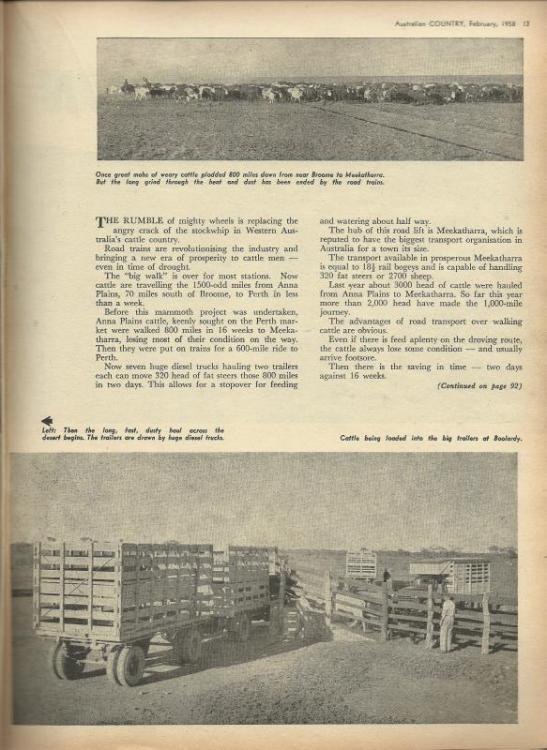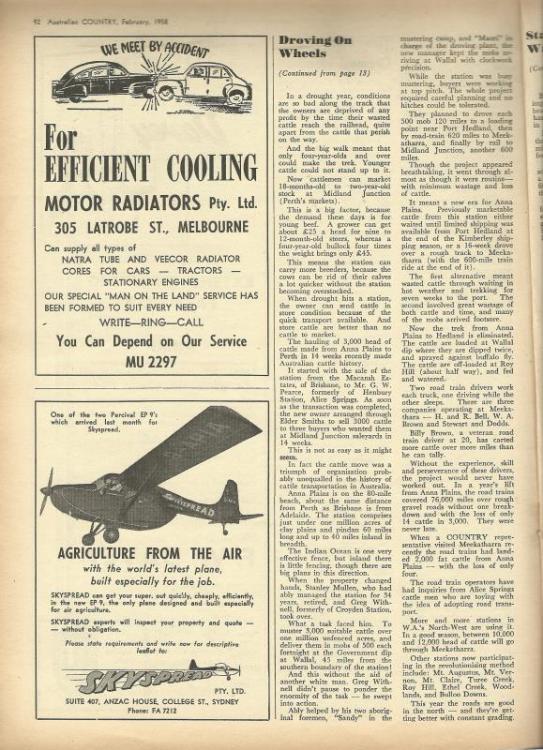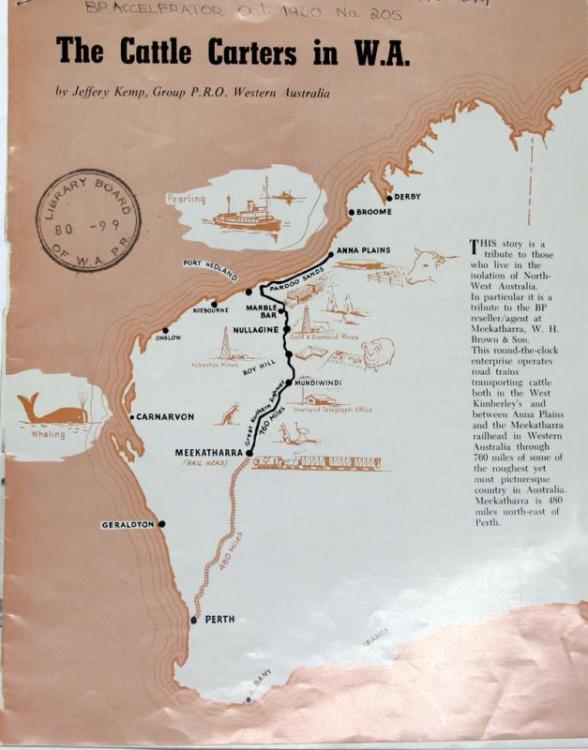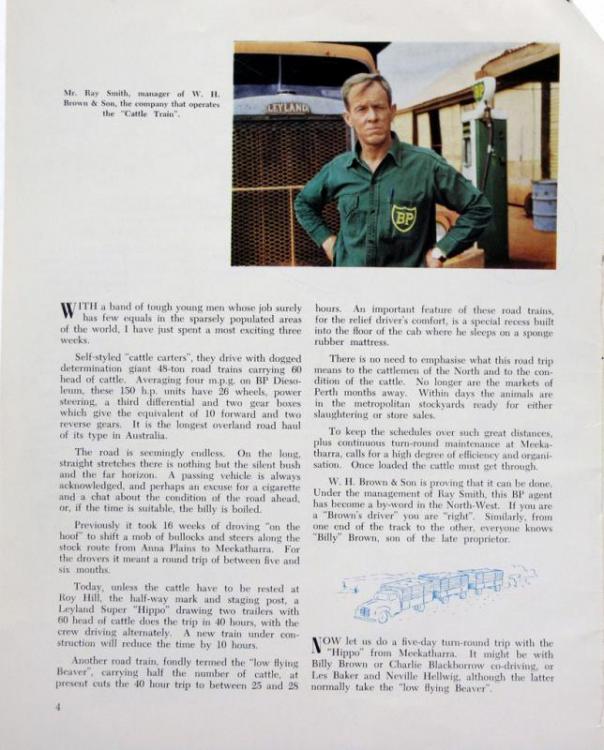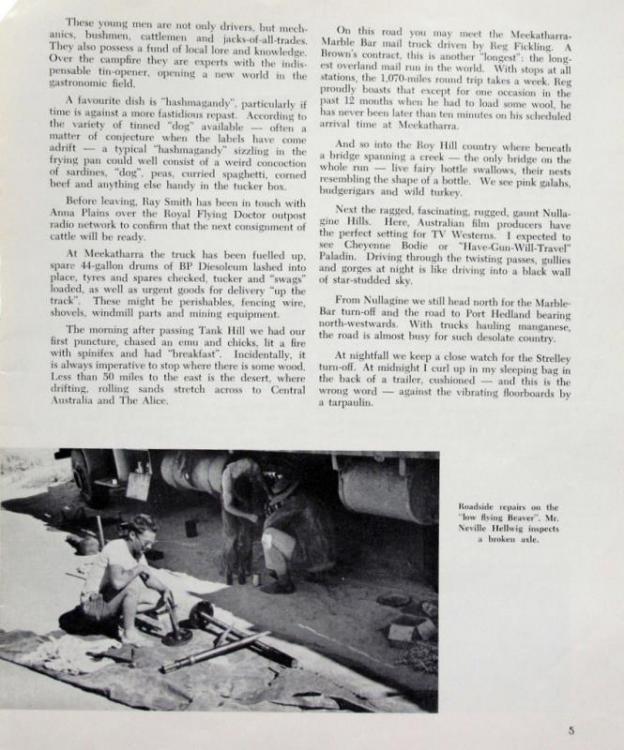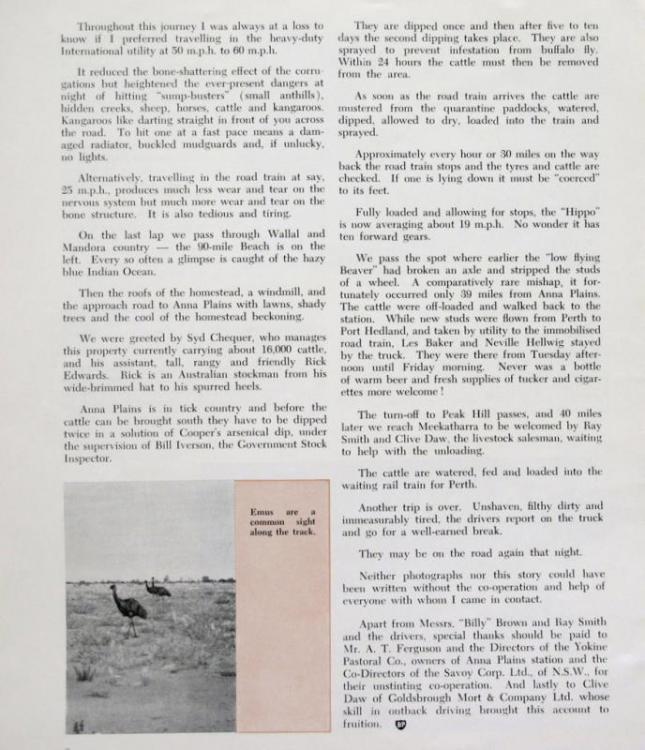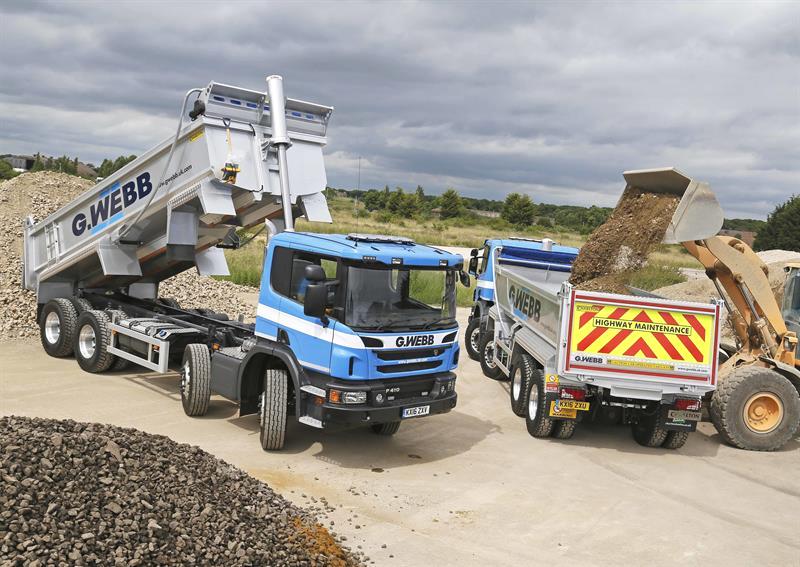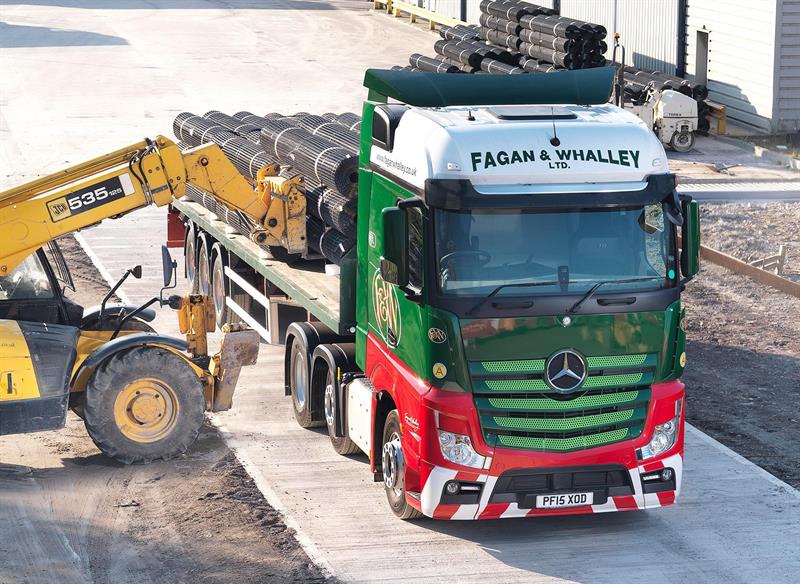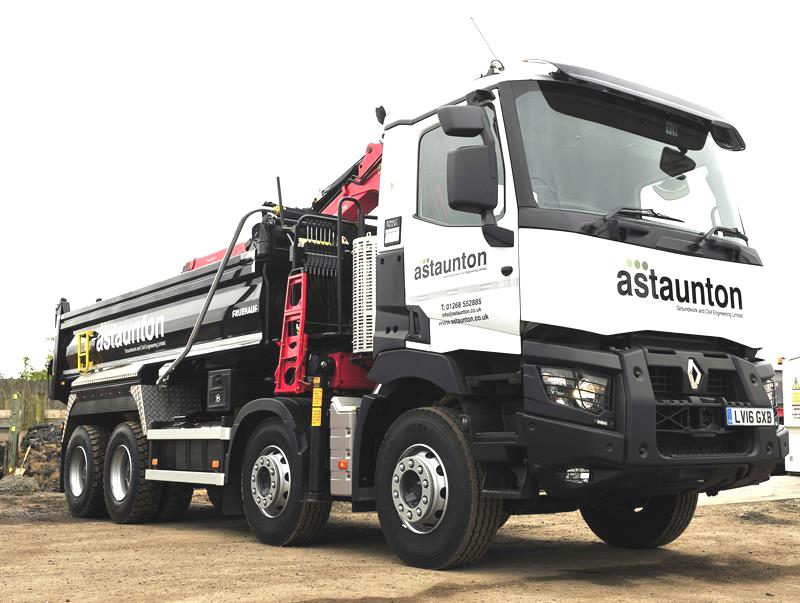
kscarbel2
Moderator-
Posts
18,876 -
Joined
-
Days Won
114
Content Type
Profiles
Forums
Gallery
Events
Blogs
BMT Wiki
Collections
Store
Everything posted by kscarbel2
-
What do these "colorful" people from Charlottesville eat for breakfast? Unbelievable News flash: The only aspect that matters about illegal (undocumented) immigrants is that they leave this country within 24 hours, and then follow our laws and procedures on "legally" immigrating into the U.S. --------------------------------------------------------------------------------------------------- Black Lives Matter protesters shut down I-95 in Virginia Land Line (OOIDA) / July 19, 2016 A group of protesters forced Interstate 95 in Richmond, Va., to be shut down during rush-hour traffic on Monday, July 18. Thirteen people were arrested in the incident. Protesters blocked the southbound lanes at 5:45 p.m. near mile marker 76. The protest included some 30 people from the Black Lives Matter movement. Police arrived on the scene about 6:20 p.m. Thirteen people were arrested for being pedestrians on a highway, and for impeding the flow of traffic. ---------------------------------------------------------------------------------------------------- The Richmond Times-Dispatch / July 18, 2016 Thirteen people were arrested Monday evening after a group of protesters shut down rush-hour traffic on Interstate 95 south of the Belvidere Street exit. The demonstration, which began shortly before 6 p.m. in the southbound lanes, was in solidarity with the Black Lives Matter movement, according to a news release from the group. The group of about 30 protesters held signs — one of which read “White silence is violence” — while shouting, “Black lives matter,” and “No justice, no peace, no racist police." The news release said “the protesters emphasized the crisis faced by black trans women and black women in Virginia, especially at the hands of the police.” By 6:20 p.m., Richmond police were on the scene and after two warnings to move from the road to the grass, several protesters were in handcuffs. Those who refused to exit the interstate were charged with being pedestrians on a highway and for impeding the flow of traffic. Thirteen protesters were arrested and transported by two police vans to the Richmond City Justice Center for processing. Those who chose to move stood along Belvidere continuing to protest. One woman in handcuffs shouted “Black lives matter” from the street below, while those on the sidewalk above echoed her chants. In the release, which protesters handed out along Belvidere Street, the group cited several black trans women they said had gone missing or were killed, adding, “As in the rest of the country and the rest of the world, Virginia does too little to love and protect black trans women from harm.” The group also cited several people killed by police. “We support the national Black Lives Matter movement’s demands to disarm the police, divest from prisons, and ensure safe and clean housing for black communities,” the release said. The protest was organized by a group out of Charlottesville via social media, said protester Nqobile Mthethwa. “As an ally and a white person, it’s important to take action. I’m a supporter in ending racism and police brutality,” said protester Noah Goodwin. .
-
Americans really should start scrutinizing our involvement in the Middle East. These people laugh at the west's political correctness, and fear of acting in any way that could be remotely viewed as racist. Since 9/11, we've vividly known the madness of the Middle East is no longer contained within the borders of that region. Using Theodore (Teddy) Roosevelt as a mentor, America should be walking with a big stick. We needn't be arrogant, but we must be rock solid in firmness. While we welcome genuine friendship, "our enemies must fear us". ----------------------------------------------------------------------------------------------------------------------- United States and Turkish-backed Syrian rebels behead child A United States-backed (CIA) Syrian militant group has been filmed beheading a child. On the 19th July 2016, during the northern Aleppo offensive, Harakat Nour al-Din al-Zenki fighters recorded themselves beheading a Palestinian child named Abdallah Issa who was aged between 10-13. The al-Zenki claimed he had been fighting for the Syrian government in Aleppo with Liwa al-Quds. Liwa al-Quds refuted this and claimed the child was a Palestinian refugee who was kidnapped. The murder took place north of Aleppo in Handarat, in an unofficial Palestinian refugee camp named Ein El Tal. Prior to being displaced by rebel groups in 2013, the camp housed 7,000 Palestinians. The video captures Nour al-Din al-Zenki fighters in the back of a pickup truck with a child they claim is an al-Quds soldier supporting Assad's Syrian forces. One of the fighters shouts “Allahu Akbar” (God is Great) after taking a small knife to the boy's throat and cutting his head off at the Handarat Palestinian Refugee Camp in Northern Aleppo. Harakat Nour al-Din al-Zenki has received both fiancial aid and weapons, including U.S.-made BGM-71 TOW anti-tank missiles, from the United States. As of 2014, it is reportedly one of the most important rebel factions in Aleppo. According to the Amnesty International, Harakat Nour al-Din al-Zenki, along with the 16th Division, the Levant Front, Ahrar al-Sham, and the al-Nusra Front, has been involved in abduction and torture of journalists and humanitarian workers in rebel-held Aleppo during 2014 and 2015. .
-
Volvo Group – 2016 2nd Quarter Earnings Report
kscarbel2 replied to kscarbel2's topic in Trucking News
Volvo Says Net Profit Falls, Announces Fine in EU Probe Heavy Duty Trucking / July 19, 2016 The Swedish parent to truck brands Volvo, Mack and others reported its second quarter profit slid from a year ago due to lower sales in many parts of the world and has downwardly revised its expectations in North America. AB Volvo said on Tuesday net profit dropped to 1.9 billion kronor ($222 million) from 5.2 billion in the second quarter of 2015 as revenue fell 7% to 79 billion kronor. Adjusted operating earnings rose to 6.13 billion kronor from a year ago’s 5.98 billion kronor, beating a forecast for 5.64 billion kronor in Reuters poll of analysts. “In the second quarter we were able to continue the improvement of our underlying profitability despite declining sales, thanks to positive cost development," said Martin Lundstedt, AB Volvo President and CEO. "Sales decreased by 7% to 78.9 billion kronor. Despite this, the underlying operating income increased to 6.1 billion kronor, corresponding to an operating margin of 7.8%." Adjusted for currency movements and acquired and divested units, sales decreased by 3%. Volvo’s order intake in the second quarter totaled 45,422 vehicles, down 8% from 49,551 in the same period last year. Order intake declined in all markets except for Africa and parts of the Pacific region. However, in terms of the value of net sales, all regions saw declines except for Europe, where they improved 10% In North America, Volvo truck orders fell 29% in the second quarter. Volvo is expecting industry-wide truck sales on the continent to total 240,000 this year, about 10,000 less than its April estimate. The news came as Volvo also announced it has reached a settlement with the European Commission putting an end to a long-running E.U. antitrust investigation. As part of the settlement Volvo will pay a fine of 670 million euros, corresponding to 6.3 billion kronor. Volvo says the amount is mainly covered by provisions made in 2014 and 2016, totaling 650 million euros or 6.1 billion kronor. “The commission case was already more than five years under way. Without the settlement we would have been facing many more years of proceedings, with an uncertain outcome. We are now able to look forward and focus on our business”, said Lundstedt, The anti-trust investigation concerns the time between 1997 and January 2011 and involves the Volvo Group as one of six manufacturers. The focal point of the case is the coordination on gross list prices, but also the introduction of new emission-related technologies, according to a statement from the European Union. “While we regret what has happened, we are convinced that these events have not impacted our customers. The Volvo Group has always competed for every single transaction”, said Lundstedt. “We have taken these events very seriously from the outset and our full cooperation with the commission resulted in a very substantial reduction in the fine.” Volvo is one of five European truck makers being hit with record fines totaling around 3 billion euros or $3.3 billion, with the others including Daimler, Paccar’s DAF, Iveco and MAN. -
Transport Topics / July 19, 2016 Volvo AB cut its outlook for the North American truck market for the third time this year after stagnant freight volumes and excess inventory drove orders in the region down by nearly one-third in the second quarter. Truck orders in North America fell 29%, and manufacturers as a whole will probably sell about 240,000 vehicles there this year, the Gothenburg, Sweden-based company said July 19 in a statement. That’s 10,000 less than its previous forecast and would be 20% fewer than in 2015. Slowing demand in the United States and the Middle East and recession in Brazil have wreaked havoc on truckmakers’ expectations for the year. Daimler AG, the biggest commercial-vehicle manufacturer, cut its trucks forecast in May, saying profits will be “significantly lower.” Volvo, which owns the Mack Trucks brand in the United States, started cutting manufacturing in North America and Brazil in February and promised further reductions on Tuesday. Thanks to production cuts, Volvo boosted truck profit excluding charges to 10% of sales from 7.7% a year earlier. The improved operating margin despite a weaker market in the United States is a “sign that even less favorable markets can be managed,” Equinet Bank analyst Holger Schmidt wrote in a note. U.S. dealers are clearing excess truck inventory more quickly in a “positive sign” for truck makers, CEO Martin Lundstedt told analysts. It will take about a year to run down surplus stock, he said Tuesday. Separately, European Union regulators announced a record 2.93 billion euros ($3.24 billion) in fines July 19 to penalize manufacturers for fixing truck prices over 14 years. Volvo and its Renault trucks brand owe 670.4 million euros, the European Commission said. The figure is in line with the 650 million euros Volvo set aside. Volvo had been working through a restructuring program to cut annual spending this year by 10 billion kronor ($1.17 billion) from 2012 levels. As part of its cost-reduction program, Volvo cut its workforce in the past year by 6.7%, or about 7,000 employees. Second-quarter earnings before interest and taxes, and excluding capital gains, a provision related to the EU truck fines and restructuring costs, increased to 6.13 billion kronor from 5.98 billion kronor a year earlier, as cost-cutting helped offset the intensifying slowdown. That beat the 5.5 billion-krona average of 11 estimates compiled by Bloomberg. Group sales fell 7% to 78.9 billion kronor. Orders for construction equipment dropped 17%. On top of the market slowdowns the trucks unit is facing, the smaller construction division is also suffering from tepid demand as low oil prices and price declines for other commodities delay new projects.
-
RT / July 19, 2016 French police have arrested a Muslim Parisian taxi driver after explosives were found at his home during a raid over a separate criminal case. Police found a picture of an ISIS flag on his phone. The 23-year-old man, was arrested on Sunday at his home in southeast Paris. The man was on a watch list of dangerous individuals. Police came to the man’s home to question him over his suspected involvement in a burglary case. Police believed the driver had robbed the empty homes of several of his clients after taking them to the airport. While searching the house for stolen goods, police discovered two sticks of dynamite, several detonators and cables. Three passports and two driving licenses stolen during a burglary last week were found in the man’s car, possibly intended for use in human trafficking. The man was known to French authorities. He was listed on France’s “Fiche S,” a list of several thousand people who are suspected of posing a security risk due to their radicalization.
-
Erdogan Taking Turkey Down Extreme Islamist Path – US Tactician Reuters / July 20, 2016 The wide-ranging purge launched by President Recep Tayyip Erdogan after last week’s failed military coup is part of his masterplan to turn Turkey into a radical Islamist state, says retired US Army Colonel and historian Douglas Macgregor. Since the failed coup, Erodgan has ordered the arrest of at least 70 generals and admirals, fired 21,000 school teachers across Turkey from their jobs and said he wants Parliament to discuss reintroducing the death penalty, which was abolished in 2004. “Turkey is now moving down the Islamist Path,” Macgregor, a leading US military tactician and combat hero of the 1991 Gulf War, said on Tuesday. Macgregor interpreted these events as signs that Erdogan was showing his true colors as a radical Islamist after 13 years of slowly but steadily increasing his personal power. “Once elected, Islamists do not surrender power: That is the lesson everyone in the West must finally accept. The coup was the last opportunity to arrest this tragic development.” Erdogan would still try and present himself to the United States and the European Union (EU) as a moderate democrat, but the reality of his political actions would tell a very different story, Macgregor warns. “In the short-run, Erdogan will attempt to the extent he can to cultivate a ‘moderate’ image but his violent suppression of internal dissent and political opposition will make it very difficult for all but the most gullible to believe in his alleged democratic credentials.” Macgregor argued that Erdogan had played a far larger role in helping to create and sustain the Daesh (ISIS), than Western governments and media had realized. He predicted that even though Daesh was being destroyed, Erdogan would seek to replace it with a similar movement. “Daesh, in large part a creation of Erdogan, Qatar and the Saudis, is now a dying Frankenstein’s monster. As it diminishes, another will arise that is likely more closely aligned with and obedient to Erdogan’s wishes.” However, as these developments unfolded, Erdogan would no longer be able to present himself to the West as a democrat and moderate, Macgregor predicts. “In the long-run, the proverbial hand writing is on the wall. Ultimately, Erdogan will be unable to conceal his true identity as Sunni Islam’s leader Jihadist Champion against the West, Russia, Iran and Israel.”
-
Japan has not experienced attacks by Islamist extremists because it has a low proportion of Muslim migrants. "Personally, I would like to see [Muslim migration] stop now for Australia," she said. "Following the atrocities of last week in Nice, where 10 children lost their lives, as a mother, I believe it's vital in a democratic society to be able to discuss these issues without being labelled racist." .
-
Now playing devil's advocate, there were some 30 people "carrying" (rifles) during a protest on the night that the gunman opened fire in Dallas. But not a single one of these "carrying" people made use of their weapon in an attempt to take out the gunman. I don't mind people owning shotguns for hunting........duck, deer, ect. I don't mind people owning a pistol for personal safety. However I do mind when people are walking the streets of American with assault rifles. That is unacceptable.
-
Maxitorque transmission
kscarbel2 replied to Kelby1375's topic in Modern Mack Truck General Discussion
Buy a used Mack TS442 service manual off Amazon. A wise investment, it will lay it all out for you. -
Truckmakers Get Record $3.24 Billion EU Fine for Cartel
kscarbel2 replied to kscarbel2's topic in Trucking News
As we know now from the global Volkswagen diesel emissions scandal, the European Commission (EC) is corrupt from the word go. They now have zero credibility. The EC and EU member countries quietly allowed Volkswagen (and others) to cheat. Leif Östling, who headed Scania at that time, has told the EC to go pound sand. ---------------------------------------------------------------------------------------------------------------------------------------------------------- Ex-Scania CEO Leif Östling completely rejects cartel accusation Dagens Industri / June 30, 2016 A battle is whipping up between the European Commission and respected truckmaking head Leif Östling. Leif Östling, Scania's former president and one of Sweden's foremost industrialists, categorically denies that Scania ever participated in a cartel with other European truckmakers. The former Scania CEO says the truckmaker has proof that it was not involved in any illegal cooperation. ----------------------------------------------------------------------------------------------------------- Background Leif Östling started his career at the Scania Truck Division of the Saab-Scania Group as a trainee in 1972. He became became head of long-term planning in 1977. In 1981 was appointed head of Sales and Marketing at Scania Nederland B.V, becoming managing director at the unit in 1983. In 1989, Östling was appointed head of the Scania Truck Division. One year later, he as selected to become executive vice president of Saab-Scania AB. When Scania and Saab were separated in 1994, Leif Östling was appointed President and CEO of Scania AB. Owing to his superb leadership, his tenure ran through August 2012. . -
Air conditioning hose CTP 713 2007
kscarbel2 replied to Fran3682821's topic in Modern Mack Truck General Discussion
$600 for a 3-foot AC hose. I hope you're kidding. -
Bloomberg / July 19, 2016 Truckmakers, including Daimler AG and Paccar Inc.’s DAF Trucks, agreed to pay European Union regulators a record 2.93 billion euros ($3.24 billion) in fines for fixing truck prices over 14 years. Daimler got the largest penalty of 1.01 billion euros and DAF will pay 752.7 million euros as part of a settlement with the European Commission that cut potential fines by at least 10 percent. VolvoAB and its Renault trucks brand face a 670.4 million euro fine/ CNH Industrial NV’S Iveco will pay a 494.6 million euro fine. Fines are high because "this cartel concerns a very large market and continued for a very long time," EU Competition Commissioner Margrethe Vestager told reporters in Brussels Tuesday. The companies’ actions fixed the prices for around nine out of every 10 medium and heavy truck sold in Europe, she said. The auto industry is the focus of investigations by competition authorities across the world. The fines exceed an initial 1.7 billion-euro penalty for banks after the Libor scandal. Volkswagen’s Scania unit refused to settle the case and may face a possible fine in the future, the commission said. Scania said in a statement that the company fully cooperated with the EU and can’t comment on what will happen next in the probe. “The company doesn’t share the Commission’s view on the findings of the investigation,” said Susanna Berlin, investor relations manager at Scania. MAN SE, also owned by Volkswagen, escaped fines for being the first to inform the EU of the cartel. Starting in 1997, the companies set the factory price of trucks and coordinated the timing and the passing-on of costs for new emissions technologies, the EU said. They didn’t avoid or manipulate compliance with pollution standards. Huge fines for cartels are the Brussels-based commission’s ultimate weapon to punish companies that cheat by fixing prices. The regulator -- which is still probing banks over foreign-exchange manipulation -- doled out massive penalties in 2013 for companies accused of rigging benchmark interest rates. The settlement includes a 10 percent reduction for promising not to challenge the EU in the courts, on top of other discounts for cooperating with regulators. Truckmakers may still face lawsuits from customers seeking damages for overcharging. "Daimler regrets these occurrences" and said the fine would be covered by its provision, according to an e-mailed statement. Paccar said the DAF fine is less than it had set aside. CNH Industrial declined to comment. DAF and Volvo had no immediate comment. MAN doesn’t tolerate "any unfair business practices or illegal conduct," it said in a statement. It avoided a potential 1.2 billion euro fine for being the first company to assist regulators in the probe, the EU said. Daimler raised provisions for possible related costs by 600 million euros in 2014. Volvo set aside 650 million euros. Paccar has made a provision of 850 million euros for its DAF Trucks unit and CNH Industrial NV allocated $502 million for a possible fine for Iveco.
-
Volvo Group – 2016 2nd Quarter Earnings Report
kscarbel2 replied to kscarbel2's topic in Trucking News
Volvo Cuts North American Market Outlook as Orders Slump Bloomberg / July 19, 2016 Volvo AB cut its outlook for the North American truck market for the third time this year after stagnant freight volumes and excess inventory drove orders in the region down by nearly one-third in the second quarter. Truck orders in North America fell 29 percent, and manufacturers as a whole will probably sell about 240,000 vehicles there this year, the Gothenburg, Sweden-based company said Tuesday in a statement. That’s 10,000 less than its previous forecast and would be 20 percent fewer than in 2015. Slowing demand in the U.S. and the Middle East and recession in Brazil have wreaked havoc on truckmakers’ expectations for the year. Daimler AG, the biggest commercial-vehicle manufacturer, cut its trucks forecast in May, saying profits will be “significantly lower.” Volvo, which owns the Mack Trucks brand in the U.S., started cutting manufacturing in North America and Brazil in February and promised further reductions on Tuesday. Thanks to production cuts, Volvo boosted truck profit excluding charges to 10 percent of sales from 7.7 percent a year earlier. The improved operating margin despite a weaker market in the U.S. is a “sign that even less favorable markets can be managed,” Equinet Bank analyst Holger Schmidt wrote in a note. Volvo rose 1.5 percent to 90.10 kronor at 1:03 p.m. in Stockholm. The stock has gained 14 percent this year. Clearing Inventory U.S. dealers are clearing excess truck inventory more quickly in a “positive sign” for truckmakers, Chief Executive Officer Martin Lundstedt told analysts. It will take about a year to run down surplus stock, he said Tuesday. Separately, European Union regulators announced a record 2.93 billion euros ($3.24 billion) in fines Tuesday to penalize manufacturers for fixing truck prices over 14 years. Volvo and its Renault trucks brand owe 670.4 million euros, the European Commission said. The figure is in line with the 650 million euros Volvo set aside. Volvo had been working through a restructuring program to cut annual spending this year by 10 billion kronor ($1.17 billion) from 2012 levels. As part of its cost-reduction program, Volvo cut its workforce in the past year by 6.7 percent, or about 7,000 employees. Second-quarter earnings before interest and taxes, and excluding capital gains, a provision related to the EU truck fines and restructuring costs, increased to 6.13 billion kronor from 5.98 billion kronor a year earlier, as cost-cutting helped offset the intensifying slowdown. That beat the 5.5 billion-krona average of 11 estimates compiled by Bloomberg. Group sales fell 7 percent to 78.9 billion kronor. Orders for construction equipment dropped 17 percent. On top of the market slowdowns the trucks unit is facing, the smaller construction division is also suffering from tepid demand as low oil prices and price declines for other commodities delay new projects. -
The Cattle Carters, starring the Leyland Super Buffalo
kscarbel2 replied to kscarbel2's topic in Other Truck Makes
Paul, I thought it was a Buffalo because of its size and the air cleaner intake on top of the left front fender. But the articles I read always said it was a Hippo. Thanks for setting me straight. -
Volvo Group – 2016 2nd Quarter Earnings Report
kscarbel2 replied to kscarbel2's topic in Trucking News
Volvo beats earnings forecast, sees U.S. market weaken Reuters / July 19, 2016 Swedish truckmaker Volvo reported better than expected second-quarter earnings on Tuesday as cost cuts and rising European sales helped fortify it against slumping U.S. demand for commercial vehicles. Heavy trucks, where Volvo is competing with Germany's Daimler and Volkswagen, are benefiting from strong demand across Europe while battling downturns across the Atlantic. Volvo, which sells trucks under the Mack, Renault and UD brands as well as its own name, scaled back its outlook for North America, saying it expected industry wide sales of 240,000 trucks, down from a forecast for 250,000 given in April. Weaker markets in the United States and also China, where sales of construction equipment are falling, will test the new leadership team's skill in boosting profitability. "In the second quarter we were able to continue the improvement of our underlying profitability despite declining sales, thanks to positive cost development," said CEO Martin Lundstedt, a former Scania boss appointed last year. Scania had long boasted some of the best profit margins in the business. Gothenburg-based Volvo said order intake of its trucks fell 8 percent in the second quarter compared with a 1 percent drop seen by analysts. A 29 percent fall in North American truck orders led the decline. Volvo shares rose 0.8 percent by 0756 GMT (03:56 a.m. EDT), outpacing a 0.7 percent fall in the in the STOXX Europe 600 Industrial Goods & Services Index .SXNP. The stock is up 12 percent so far this year compared with a 2 percent drop for the index. "The earnings are really good, and what stands out is primarily the 10 percent operating margin in trucks despite them scaling back output in North America," Handelsbanken Capital Markets analyst Hampus Engellau said. "This is exactly what one wanted to see." Lundstedt has come on board as Volvo begins reaping the benefits of a 10 billion Swedish crown ($1.17 billion) cost cutting drive intended to make the sprawling group less prone to sharp swings in profitability as cyclical truck markets periodically slump. The group said adjusted operating earnings rose to 6.13 billion crowns from a year-ago 5.98 billion, beating a mean forecast for 5.64 billion in Reuters poll of analysts. It reported adjusted operating margin of 7.8 percent compared with a year-ago 7.1 percent and the 7.0 percent seen by analysts. "The results tells us that Volvo are on track to boost its earnings generation capacity also when demand is not great," said Danske Bank analyst Bjorn Enarson. --------------------------------------------------------------------------------------------------------- Volvo's CEO: "We need to recruit" Affars Varlden / July 19, 2016 Volvo may recruit 400-500 people at the Tuve plant in Gothenburg, CEO Martin Lundstedt has announced. Simultaneously, the company's profit compared with the same period last year. Truck manufacturer Volvo AB reported a pretax profit of 3.453 billion kronor for the second quarter. That compares with profit of 6.362 million kronor in the same period last year. Analysts had on average expected a profit of 2.807 million kronor. Volvo's CEO Martin Lundstedt satisfied with the results for the second quarter. “We had another good quarter where we improved our underlying profitability and it is particularly gratifying that we reached an operating margin of ten percent in trucks, Lundstedt said. Turnover amounted to 78.89 billion kronor, compared to 84.783 billion kronor a year earlier. Volvo also announced that the company will reduce the number of employees in North America by about 300 people. “We need to adjust the number of employees to achieve a better balance between production levels, inventory levels and demand”, said Lundstedt. “However, we need to recruit 400-500 people for our Tuve truck plant in Gothenburg. We are very happy”, said Lundstedt. Deliveries of trucks fell to 52,670, down from 55,613 in the second quarter last year. At the same time, truck orders received fell to 45,422 from 49,551 a year earlier. Analysts had on average expected an order intake of over 49,000 trucks. -
Volvo Group Press Release / July 19, 2016 “In the second quarter we were able to continue the improvement of our underlying profitability despite declining sales, thanks to positive cost development. Sales decreased by 7% to SEK 78.9 billion. Despite this, the underlying operating income increased to SEK 6.1 billion, corresponding to an operating margin of 7.8%,” Martin Lundstedt, President and CEO. • In Q2 2016 net sales decreased by 7% to SEK 78.9 billion (84.8). Adjusted for currency movements and acquired and divested units sales decreased by 3%. • Operating income in Q2 2016 amounted to SEK 6,130 M (5,979), corresponding to an operating margin of 7.8% (7.1), excluding a provision of SEK 2,334 M related to the EU competition investigation in Q2 2016 and restructuring charges of SEK 799 M and a capital gain of SEK 2,137 M from the sale of shares in Eicher Motors Limited in Q2 2015. • Currency movements had a negative impact on operating income of SEK 317 M. • Operating cash flow in the Industrial Operations was positive in an amount of SEK 6.9 billion (8.6). ----------------------------------------------------------------------------------------------------------------- The Numbers In the second quarter of 2016, sales (deliveries) from Volvo Group’s truck operations amounted to 52,670* units, down 5 percent from 55,613 units in Q2 2015. Volvo brand truck sales (overall) fell to 28,255 units globally, down 9 percent from 30,997 units in Q2 2015. Volvo brand truck sales in North America plunged to 6,786 units, down 39 percent from 11,208 units in Q2 2015. Volvo brand truck sales in Europe rose to 14,430 units, up 17 percent from 12,343 units in Q2 2015. Mack brand truck sales (overall) plunged to 5,588 units globally, down 22 percent from 7,160 units in Q2 2015. Mack brand truck sales in North America plunged to 5,192 units, down 21 percent from 6,547 units in Q2 2015. Mack brand truck sales in South America crashed to 157 units, down 54 percent from 338 units in Q2 2015. Mack brand truck sales in Africa/Oceania (includes Australia, New Zealand) fell to 238 units, down 11 percent from 267 units in Q2 2015. Continuing to save the day for Volvo Group with stunning results, Renault Truck sales rose to 13,650 units globally and 12,304 in Europe, rising 12 percent and 23 percent respective compared with Q2 2015. UD (Nissan Diesel) brand sales fell to 5,177 units globally and 4,147 in Asia, down 1 percent and 2 percent respectively compared with Q2 2015. * Excluding Dongfeng, Dongvo (UD China) and VE Commercial Vehicles (Eicher) For a PDF version of the report, please click here: http://www.volvogroup.com/group/global/en-gb/_layouts/CWP.Internet.VolvoCom/NewsItem.aspx?News.ItemId=152052&News.Language=en-gb
-
The Cattle Carters, starring the Leyland Super Buffalo
kscarbel2 replied to kscarbel2's topic in Other Truck Makes
-
The Cattle Carters, starring the Leyland Super Buffalo
kscarbel2 posted a topic in Other Truck Makes
-
Transport Engineer / July 18, 2016 Cambridgeshire-based contractor G Webb has added two new Scania P-cabbed tippers to its 50-strong fleet, each mounted with Charlton SuperLite bodies and delivering class-leading payloads of more than 19.6 tonnes. Class-leading because, as Webb general manager (haulage) Neil McMurdo explains, these 410bhp engined eight wheelers have been fitted with steel bodies capable of handling aggregates work. In fact, with a full tank of fuel, a driver and all ancillary equipment, each tipper truck tares off at just under 12,400kg. That’s in part due to the lightweight Scania tipper chassis but also the SuperLite bodies. “Traditionally, most of our fleet has been built up around bulkers with alloy bodies, often employed on longer distance work,” comments McMurdo. “Today, changing work patterns led by the house-building industry are requiring us to purchase vehicles speced for earthmoving and delivering sand and aggregates.” With their 19.6 tonne payload capacity, the Scania-Charlton combination, he says, delivers a highly productive operating proposition. Company director David Webb agrees: “We’ve looked at Thompsons and Charlton bodies for many years, but we just weren’t operating those types of tippers. “Now, things have changed... We’re all impressed not just by the SuperLite’s low weight and clean, functional design but also Charlton’s high standards of product detailing, fit and finish.” For him, this specification is right for the company’s latest operations – meaning the firm should be able to keep its latest acquisitions going for a long time. “These two new tippers will be joined by a third in September, also fitted with a Charlton body but this time with a crane and grab as well,” he adds. .
-
Transport Engineer / July 18, 2016 Lancashire haulier Fagan & Whalley has been so impressed by its first Mercedes-Benz Actros that it has now ordered another pair to join its 200–strong tractor fleet. Operations director Graham Fagan says the truck, which entered service last year, delivers on three main fronts: driver appeal, fuel efficiency and image. “We take great pride in the appearance of our fleet and the Actros certainly has the right image,” states Fagan. “We also endeavour to provide our drivers with the best vehicles, and their feedback has been entirely positive,” he continues, adding that they particularly like the driveability, performance and quality interior of the new Actros. “The Actros is leading the way on fuel economy too, with mpg returns right up there with the very best on our fleet. This helps us to minimise the impact of our operation on the environment, an important factor given our commitment to sustainability.” Fagan & Whalley’s first Actros was a 2545 with the BigSpace cab, powered by the 12.8-litre, 449bhp straight-six driving through a 12-speed Mercedes PowerShift 3 AMT (automated manual transmission). The next two will take engines from Mercedes’ second-generation OM 471 family, capable of delivering 3% better fuel returns. Mercedes-Benz dealer Ciceley Commercials convinced Fagan & Whalley to go for the new order after providing an Actros Fuel Challenger for trial. “These are still relatively early days and the evaluation is ongoing. We want to see how the trucks perform over the longer term, into years three and four, but the early signs are certainly promising,” states Fagan. “We’ll also be monitoring the support we receive from Ciceley Commercials, though having bought a few rigids from them in the past we know they run a very professional operation.” .
-
Transport Engineer / July 18, 2016 A Staunton Groundworks and Civil Engineering has added two Renault Range C430.32 8x4 tippers to its 30-strong fleet, citing favourable experiences with Renault vans and recommendations from others. The Leigh-on-Sea-based operator’s new 32-tonners were supplied by Renault Trucks Essex and mounted with a Fruehauf double-insulated tipper body, Epsilon crane with grab bucket, FORS camera warning system and an onboard weighing system. “We have been running Renault vans for a while and they’ve been working well for us,” comments director Anthony Staunton. “So when we were looking for new tippers everyone recommended the Range C. I certainly [haven’t been] disappointed: I really liked the look of them and now I think they are the best looking trucks on the road.” That matters: as Staunton says, keeping drivers happy is a priority for any successful operation. “They are really impressed and are dying to get out in them. In fact we are all so pleased that I am considering getting another one.” These Range C tippers are now being used across Essex Highways and Hertfordshire Council Highways on maintenance projects. .
-
Accessories
-
Volvo Trucks to Lay Off 300 More Workers at Virginia Plant
kscarbel2 replied to kscarbel2's topic in Trucking News
It's troubling that Volvo Group North America and its Volvo Trucks USA unit do not have the integrity to ever mention the layoffs on their news releases, an opportunity to express how painful it is for them to send people home whose families depend on a Volvo paycheck for their livelihood. The lay offs at New River Valley are the result of low sales, which in Volvo's case, are largely the result of poor management (sales marketing and other) in the US market. http://www.volvotrucks.us/about-volvo/news-and-events/ http://www.volvogroup.com/group/global/en-gb/volvo group/worldwide/Volvo-Group-North-America/Pages/North-America.aspx Seriously, after watching this video, would you buy a truck from these people? Or from Freightliner, Navistar or Paccar who "professionally" promote their products? Does this reflect Volvo's perception of the U.S. customer? . -
Relax, it's just a show.
BigMackTrucks.com
BigMackTrucks.com is a support forum for antique, classic and modern Mack Trucks! The forum is owned and maintained by Watt's Truck Center, Inc. an independent, full service Mack dealer. The forums are not affiliated with Mack Trucks, Inc.
Our Vendors and Advertisers
Thank you for your support!







